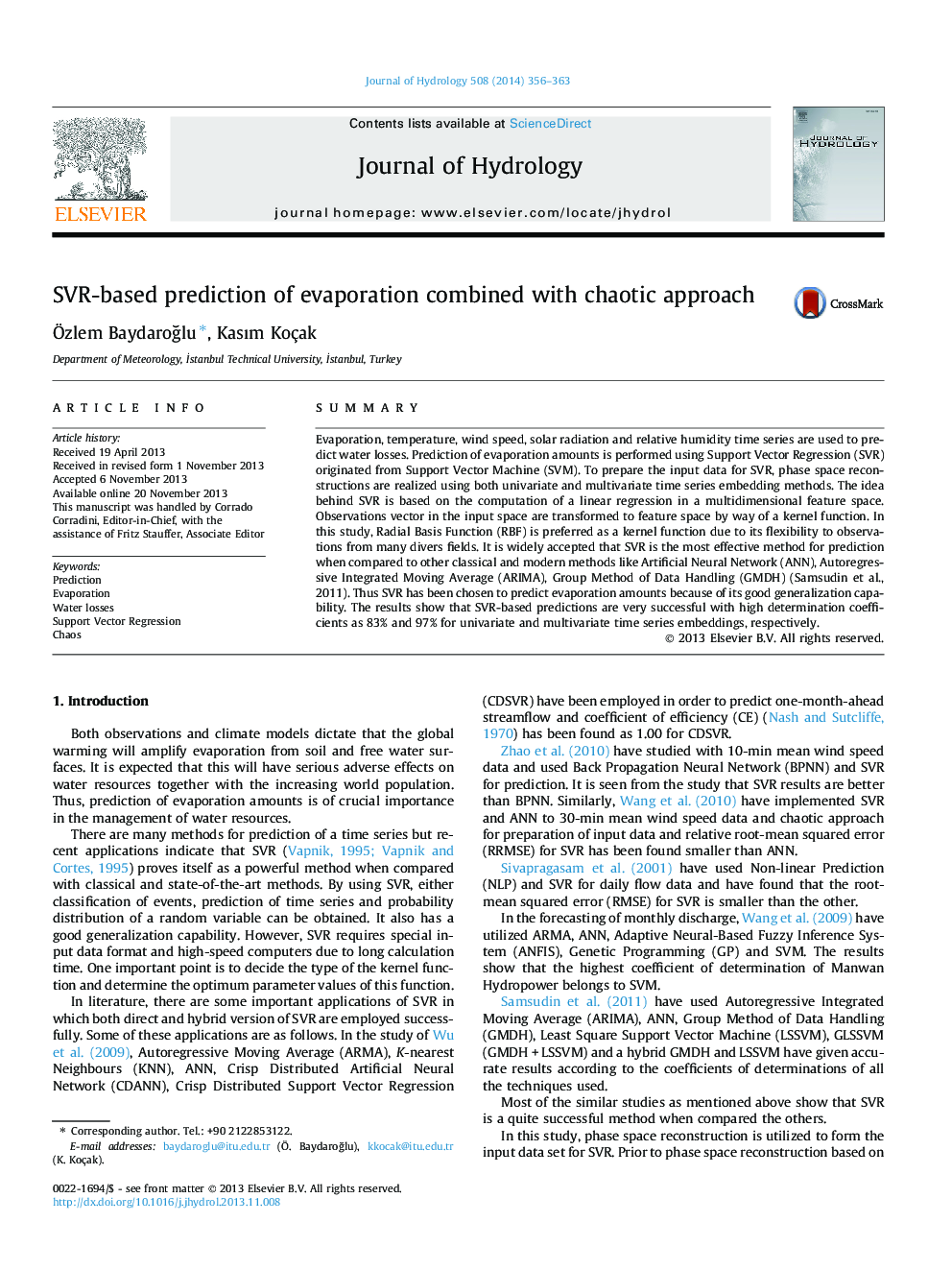| کد مقاله | کد نشریه | سال انتشار | مقاله انگلیسی | نسخه تمام متن |
|---|---|---|---|---|
| 4576061 | 1629940 | 2014 | 8 صفحه PDF | دانلود رایگان |

• Water losses due to evaporation are predicted via Support Vector Regression (SVR).
• Chaotic approach (CA) is used in order to prepare input data set for SVR.
• Univariate (UTSE) and multivariate (MTSE) time series embeddings are implemented.
• Determination coefficient as high as 97% are found via prediction based on MTSE.
• SVR-based prediction combined with CA matches perfectly with observations.
SummaryEvaporation, temperature, wind speed, solar radiation and relative humidity time series are used to predict water losses. Prediction of evaporation amounts is performed using Support Vector Regression (SVR) originated from Support Vector Machine (SVM). To prepare the input data for SVR, phase space reconstructions are realized using both univariate and multivariate time series embedding methods. The idea behind SVR is based on the computation of a linear regression in a multidimensional feature space. Observations vector in the input space are transformed to feature space by way of a kernel function. In this study, Radial Basis Function (RBF) is preferred as a kernel function due to its flexibility to observations from many divers fields. It is widely accepted that SVR is the most effective method for prediction when compared to other classical and modern methods like Artificial Neural Network (ANN), Autoregressive Integrated Moving Average (ARIMA), Group Method of Data Handling (GMDH) (Samsudin et al., 2011). Thus SVR has been chosen to predict evaporation amounts because of its good generalization capability. The results show that SVR-based predictions are very successful with high determination coefficients as 83% and 97% for univariate and multivariate time series embeddings, respectively.
Journal: Journal of Hydrology - Volume 508, 16 January 2014, Pages 356–363